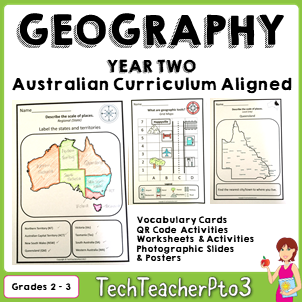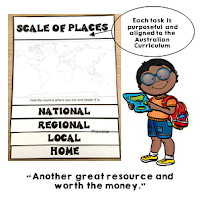Graphing Data Packs are a fun way to teach young students the higher order questioning skills required for interpreting data. All packs are aligned with the Australian Curriculum (ACARA) for Year 2 Maths.
I've used these visuals to ask the students each day 'How did you get to school today?' and record their responses with pictures on the whiteboard (I laminate the pictures and attach magnets to the back to make them easy to throw up on the whiteboard). I then sort the pictures into rows (or get a student to help me) and then we place numbers up the side and titles down the bottom. We then collectively create a title for the picture graph and the students record their data into their daily flip book (included). At the end of the week we look over our results and draw some conclusions about what the data is telling us by filling in the summary sheet. Afterwards we create a poster for the week to advertise the results of our data collection - the winning travel method that week was.. etc.. You can use this pack each week and really get to the stage where you don't need to do much instructions with young students and they can demonstrate their learning by themselves.
This pack contains survey forms and is a great introduction to developing a survey with very simple options on a 'yes' or 'no' basis and... who doesn't love ice cream?
This pack as the same format as the ice cream pack (contains a 'yes' and 'no' survey), however, the options given move students up towards higher order thinking. You might brainstorm questions for the survey such as 'what type of meat would you like?' or you might discuss with students if mayo should be on a separate survey form as a condiment rather than a filling. Lots of possibilities with this pack and again a chance for students to display their learning with a classroom poster.
This pack as the same format as the sandwich and ice cream packs but the questions may be more complex or perhaps more seasonal. There are lots of teaching opportunities with students here to move their thinking to higher order questions, open or closed questions and appropriateness of questions verse answers given. This also makes a fun end of year activity.
Save money by purchasing all 4 packs in the bundle!


































